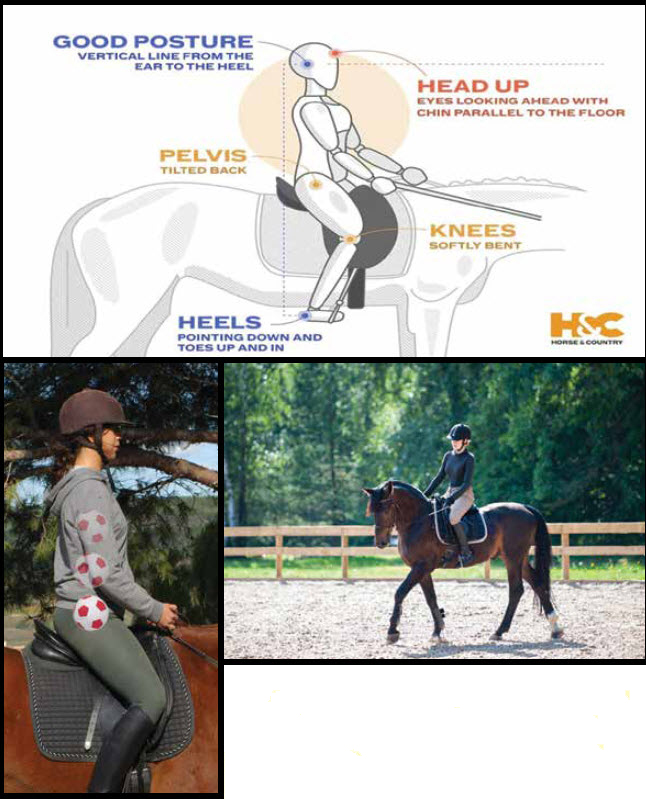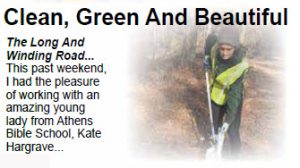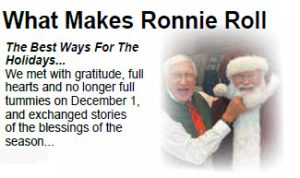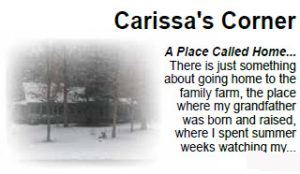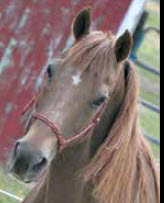 By: Deb Kitchenmaster
By: Deb Kitchenmaster
Alignment is a force worth getting to know and experience in all arenas of our lives. To be aligned, you personally are in a certain position. You are in a union, an agreement, a partnership with someone, something, a group or a nation(s). Inside a horse arena or outside the horse arena ALIGNMENT is noteworthy.
Alignment with a horse means that you, the rider, are balanced and centered over the back of the horse, as well as being aligned with the moves and curves of the horse. Alignment is your key to stability and security when you are in the saddle. Pay attention to your saddle. If the saddle seat is bigger than what you need, when movement begins, you may not be secure in the saddle because of too much space. Likewise, if the back of the saddle is too high for your frame, when movement begins you will be positioned forward too much. The alignment that you are looking for is to have your ears, your shoulders, your hips, and your heels be in line.
When your focus is on aligning with someone or something (horse), it brings body awareness and teaches a language that allows clearer communication between each other.
Your hands! Your hands are probably the most powerful tools you can have in your tool belt. Hold your hands still. They should be just in front of your body, at a level that is positioned between your belly button and the saddle. Keep your hands lower than your elbows.
Your shoulders! Funny! A song just popped into my head. Remember the song “Head and shoulders; knees and toes”? It’s kind of like that. Keep your shoulders back and down, try to keep your head and eyes up. Have ‘soft’ eyes. Focus on your breathing. Deep, steady breathing can help you relax and stay focused while riding. Try to take slow deep breaths in through your nose and out through your mouth (like blowing out a candle) to help you maintain balance and control.
Legs! The legs absorb shock. The practice of developing a stable leg that is not gripping but still and relaxed is at the foundation of you staying on your horse. When you have a slight bend in your knee, it opens your knees, and you are free to position your toes to be straight and lifted. Gripping with your thighs or knees pushes you out of the saddle, and you are in an unstable position. If the toes are out and not lifted, one experiences gripping with the calves of the legs and again there is a lack of stability. How then do we find our correct leg position? First, take your feet out of the stirrups (know your mounted horse). Bring your legs up and then set them down in your stirrups. Your legs feel nice and loose against the saddle. There is an opening from the hip to the knee. Remove your feet from the stirrups, point the knee down. This opens the hip flexor. One feels free to swing at the knee. Now find your stirrups. Simply wiggle your ankle and catch your stirrup. Once you find your stirrup, you’re going to lift your toe up. It’s important not to press your heel down because that locks your knee and your ankle when you do that. Your ankles are shock absorbers, so you want them positioned properly.
Muscles! Note to self, “I will be using muscles in my legs that may need to be strengthened.” Attention hamstrings, quadriceps (stabilizer to hips), and medial gluteus. In lifting my toes, my calves are involved, which will call for strength in my Achilles tendon.
Stand up in your stirrups (know your mount) with hands off of reins. You don’t want to feel like you’re falling forward or backward. You want to simply experience, while standing in the stirrups, stability and safety.
Be gentle, patient, and kind with yourself. You may need to break some old habits (gripping) or build muscle(s). It takes time to build that muscle memory and feel comfortable. You are now in the midst of ‘PROCESS.’ Enjoy and remember ‘LOOK UP.’



